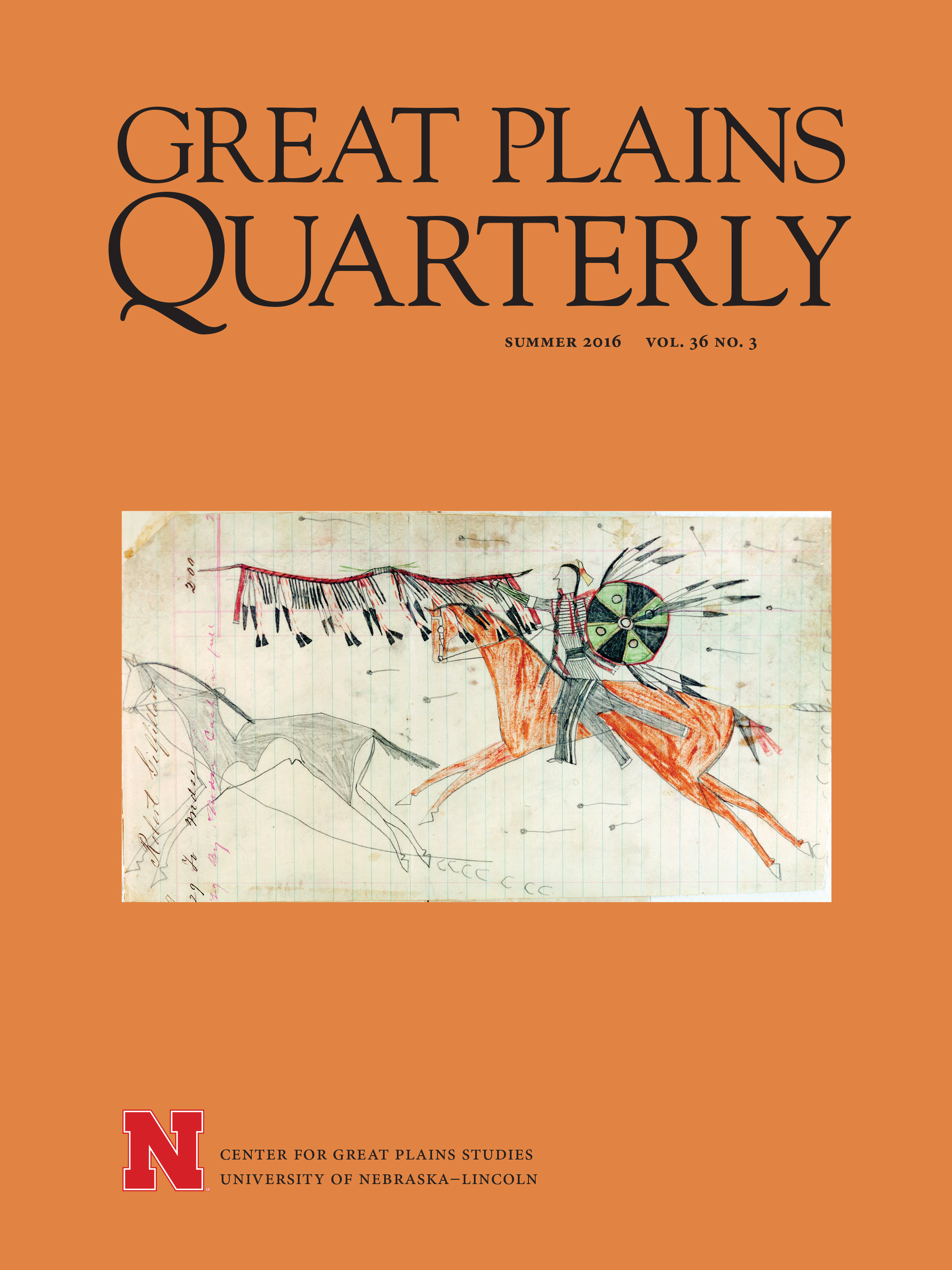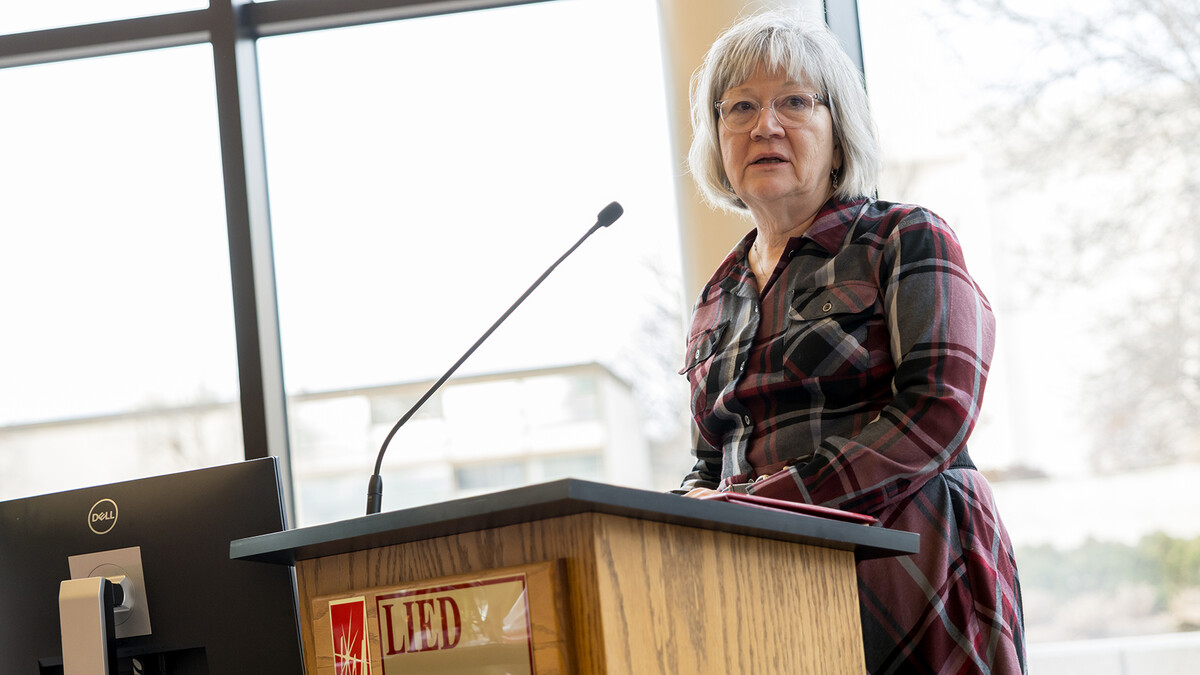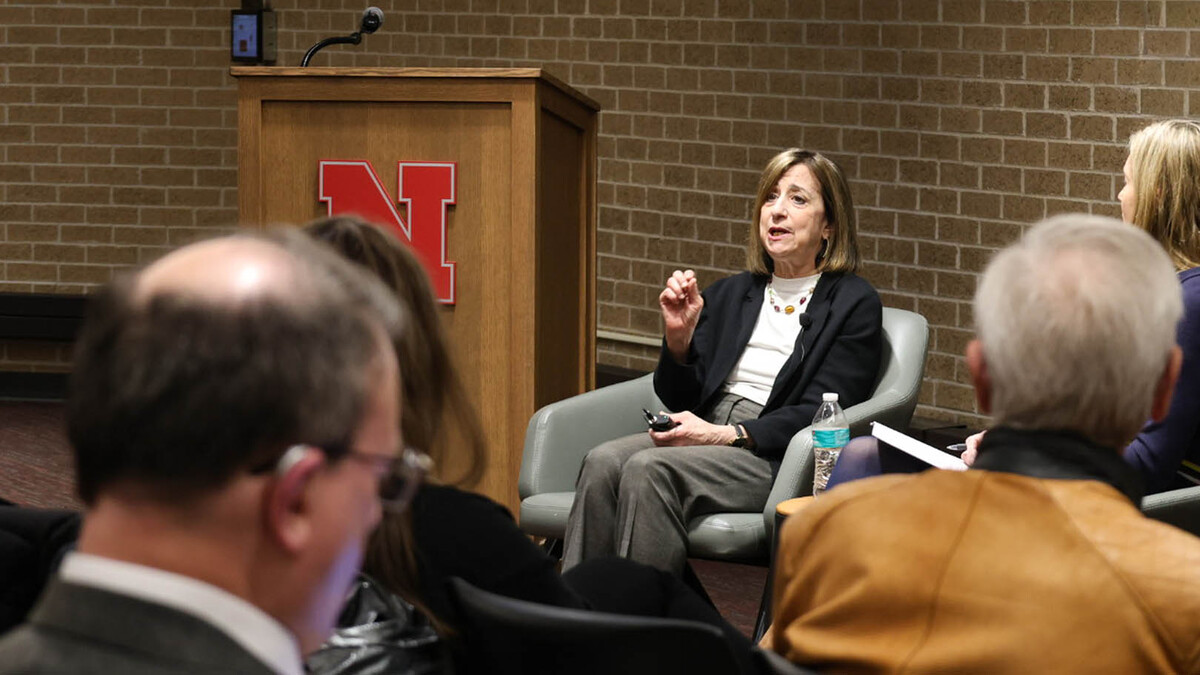
In 1879, a first lieutenant in the U.S. Army’s Third Cavalry adopted the style of Native artists to draw illustrations of his experiences fighting in the Plains Indian Wars. It was a technique at odds with the realistic artistic style used by his peers.
Judith Bookbinder addresses this unique happening in “Inspired by Plains Indian Drawings: The Mystery of Lieutenant Adolphus von Luettwitz’s Drawings of the Plains Indian Wars,” published in the summer 2016 issue of Great Plains Quarterly. Through extensive use of archival sources, Bookbinder details the reasons and background behind von Luettwitz’s drawings made during Gen. George Crook’s 1876 campaign against the northern Sioux and Cheyenne. These drawings criticized, and at times even satirized, the U.S. Army and government.
“In embracing the format and style of ledger drawings and animal hide paintings,” Bookbinder writes, “von Luettwitz turned to Native visual imagery as a clear rejection of white supremacy, and he affirmed the respect for Native Americans that had been growing among the soldiers of Crook’s campaign.”
Other features in the issue (Volume 36, No. 3):
Abby Whalen offers a fascinating look at how the Trans-Mississippi and International Exposition held in Omaha in 1898 focused on the societal changes and characteristics of Nebraskans and Plains-state residents through elaborate attractions and displays in “A Temporary Taming of the Wild West: The Events of the Trans-Mississippi and International Exposition of 1898.”
The challenges, rewards and hardships of an engaged couple determined to settle their respective homesteads in Colorado and Iowa in the early 20th century come to life through their correspondence as detailed in “Settling Down and Proving Up on an Eastern Colorado Homestead: The Correspondence of Estelle Siglin and Homer Evans, 1906-1911” by Rena K. Fowler.
Three books — Rick Edwards’ “Natives of a Dry Place: Stories of Dakota before the Oil Boom,” Annick Smith’s “Crossing the Plains with Bruno” and Doreen Pfost’s “This River Beneath the Sky: A Year on the Platte Three” – which focus on the importance of place in the face of increasing environmental exploration, are reviewed in “The Platte, a Dry Place, and the Plains” by Gaynell Gavin.
Book reviews include Laura Ingalls Wilder’s “Pioneer Girl: The Annotated Autobiography,” Ian Mosby’s “Food Will Win the War: The Politics, Culture and Science of Food on Canada’s Home Front,” Gerald T. Conaty’s “We Are Coming Home: Repatriation and the Restoration of Blackfoot Cultural Confidence” and Ian Michael Spurgeon’s “Soldiers in the Army of Freedom: The 1st Kansas Colored, the Civil War’s First African American Combat Unit.”
“Great Plains Quarterly” is an interdisciplinary academic journal published by the Center for Great Plains Studies at the University of Nebraska-Lincoln. The issue is available via the University of Nebraska Press as an individual copy or as a subscription or online via Project MUSE through participating university libraries. For more information, click here.









